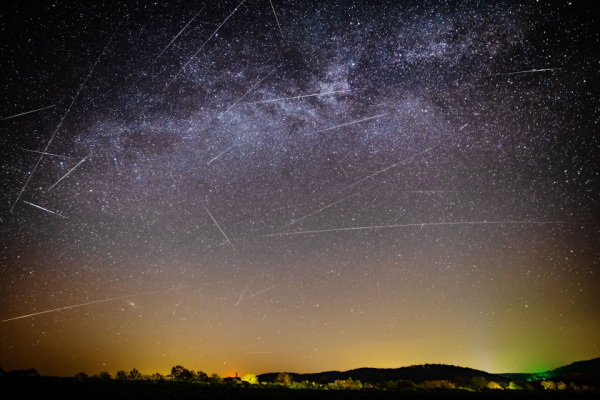The first major meteor shower of 2025 – the Lyrids – is due to arrive this weekend. Most meteor showers are caused by debris from a passing comet. For the Lyrids, the comet is named Comet Thatcher.
The Lyrid meteor shower – spawned by this comet – seems to outburst, or produce an unexpectedly large number of meteors, every 60 years. The next Lyrid outburst is due in 2042. The outbursts happen because of the planets’ reshaping the long trail of comet debris left behind by Comet Thatcher in its long orbit. This debris is what intercepts Earth’s orbit yearly, to create the meteor shower.
This annual meteor shower usually happens in the spring, in the latter half of April. The peak of the Lyrids is narrow (no weeks-long stretches of meteor-watching, as with some showers). Some sources say the best viewing in the Northern Hemisphere will be the night between April 21 and 22.
According to the Planetary Society, the best way to view the meteor shower is to find a dark sky site and look towards the constellation Lyra (up and to the north) during the period between midnight and dawn. However on those nights, the moon is expected to be 40% in brightness, which could interfere with viewing, according to the American Meteor Society. It may be best to view the meteor shower on the evening of April 21, just before the waning crescent moon rises. In the best conditions, the Lyrids average about 10 to 15 meteors per hour, but it can bombard the sky with up to 100, according to NASA.
Here’s a great viewing tip from EarthSky.org: Go to a country location where the skies are as dark and clear as possible. Observe under a wide-open sky. But try to place yourself in a moon shadow. If you can block out the sight of the moon, yet still have some sky left for seeing meteors, you might see some of the brightest Lyrids blaze past in the bright moonlight. Remember, even one bright meteor can make your night!
—
Photo Credit: Ingo Bartussek / Shutterstock.com
